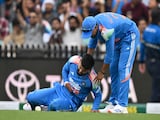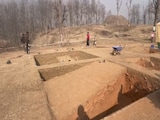This year, India is celebrating its 78th Independence Day on August 15. This day is celebrated with great vigour and zeal all over the country. On this day, we remember the freedom fighters who fought for our nation's independence. People also organise cultural programs and seminars to pay tribute to the freedom fighters who sacrificed their lives for India's freedom. But did you know that on this day, the Indian flag is hoisted, not furled? The terms "flag hoisting" and "flag unfurling" are commonly interchanged, but they represent different techniques for presenting the national flag.
So, here's a look at the subtle yet significant difference in how the national flag is presented on Independence Day and Republic Day in India.
Difference between unfurling and hoisting the flag
The crucial difference lies in how the tricolour is positioned during the two ceremonies. On Independence Day, the flag is positioned at the bottom of the pole and is raised (hoisted) by the Prime Minister, from the bottom to the top.
Also Read | Is It 77th Or 78th Independence Day? All You Need To Know
On Republic Day, the flag is folded or rolled up and attached to the top of the pole. It is then unveiled (unfurled) by the President, who does so without pulling it up.
Why the flag is hoisted and not unfurled on Independence Day?
On Independence Day, the Prime Minister hoists the flag from the bottom of the pole. Flag hoisting on this day often includes a ceremonial event with a military or civilian honour guard raising the flag while the national anthem is played. The hoisting on Independence Day symbolises the rise of a new nation, patriotism, and freedom from colonial rule.
On Republic Day, the flag is unfurled by the President and it remains closed and tied at the top of the flagpole. The flag is unfolded by the President without pulling it up. Republic Day marks the adoption of the Indian Constitution in 1950. The flag is unfurled as a symbolic gesture to renew the commitment to the principles laid down in the Constitution, highlighting the shift from colonial rule to a sovereign, democratic republic.















